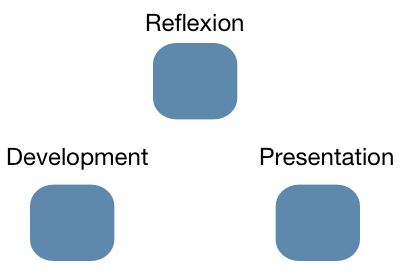Portfolio – a term often used and interpreted differently.
Originally the term is latin and compound of two parts: portare = carry and folio = paper. A portfolio are therefore papers which can be carried. Often that happens in so called binders. As soon as a portfolio is supported electronically and contains electronic medias it is called ePortfolio. The aim of such a portfolio is collecting electronic data and thanks to the reflexion, optimize the own learning process.
Advantages of a portfolio
A portfolio has several advantages:
- The users of a portfolio can collect, describe and analyze contents of any type. Especially the electronic dump simplifies this process.
- With a portfolio it is possible to reflect the own learning and thus optimize the learning process.
- As everything is saved in binders, the portfolio keeps accessible over a longer period. This enables comparisons and with the access rights for third parties even more feedback can be gained.
Disadvantages of a portfolios
Of course there are also disadvantages of a portfolio:
- If there are too strong specifications, the portfolio is filled out from the user like the "purchaser" wants it and not like the user would have designed it. Thus the self-reflexion gets lost.
- Often a portfolio provides unlimited space to collect whatever is found. It's the skill to collect the relevant and be courageous to leave unimportant.
- A reflexion on its own is for sure a a good thing but can be used in extremis in a portfolio. This danger of "over reflexion" needs to be prevented.
Portfolio 2.0 in OpenOLAT
In the Portfolio 2.0 of OpenOLAT different types can be implemented. As far as the access rights are given by the administrator, every OpenOLAT user can create a own portfolio (binder) of any type.
Specifically it is aligned to the assessment portfolio. Therefore a portfolio template with assignments is created be the author which can be edited by the users afterward.
Hint
The assessment criteria should be discussed with the users before starting editing.
More information about the process you find here.
Sources (in german)
E-Portfolio
Eine Taxonomie für E-Portfolios
Studie der Salzburg Research Forschungsgesellschaft
Wikipedia E-Portfolio


